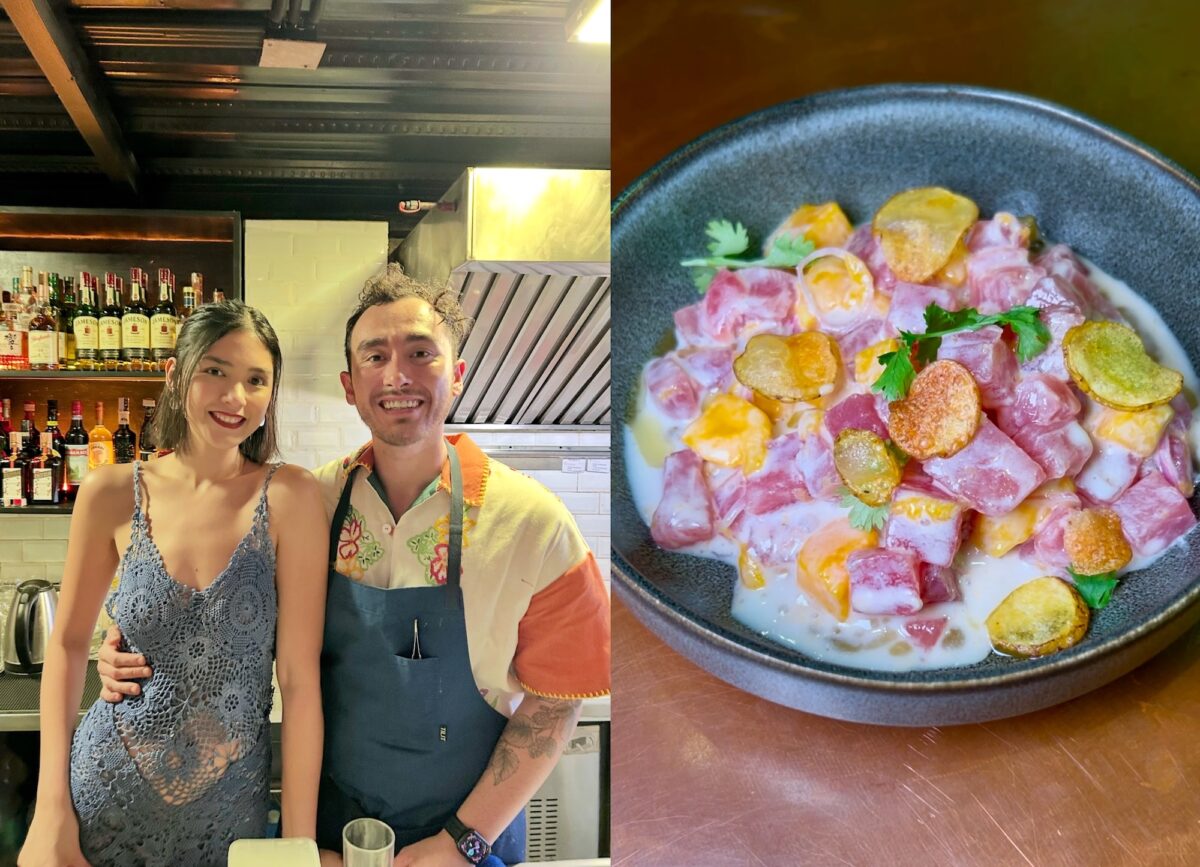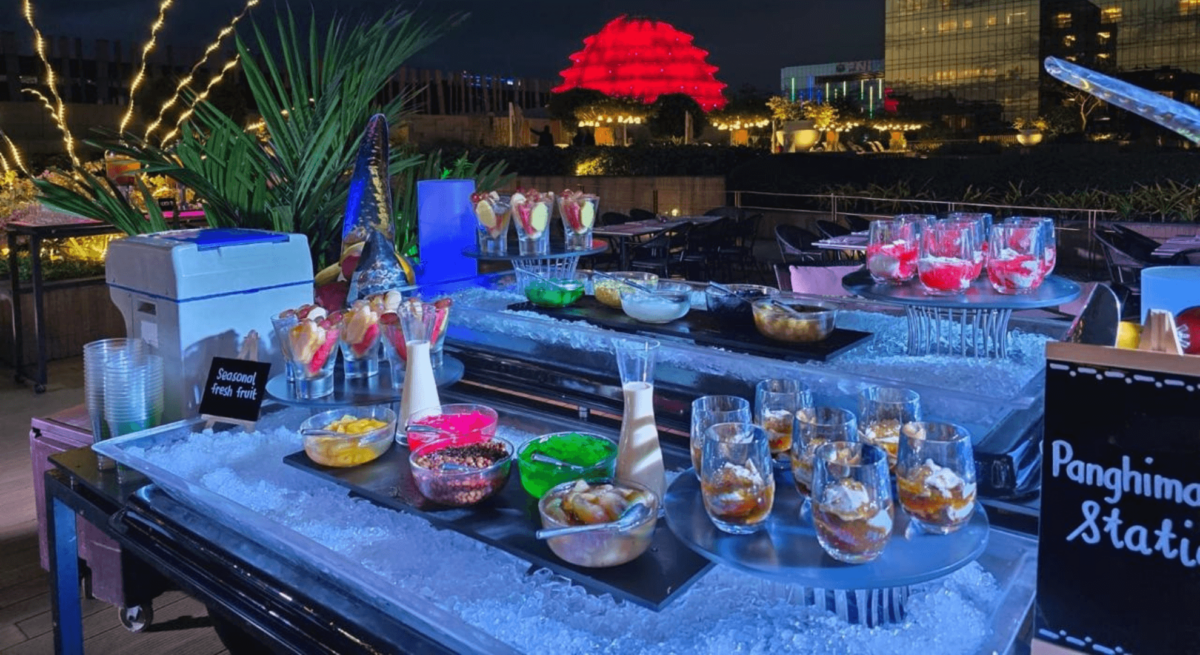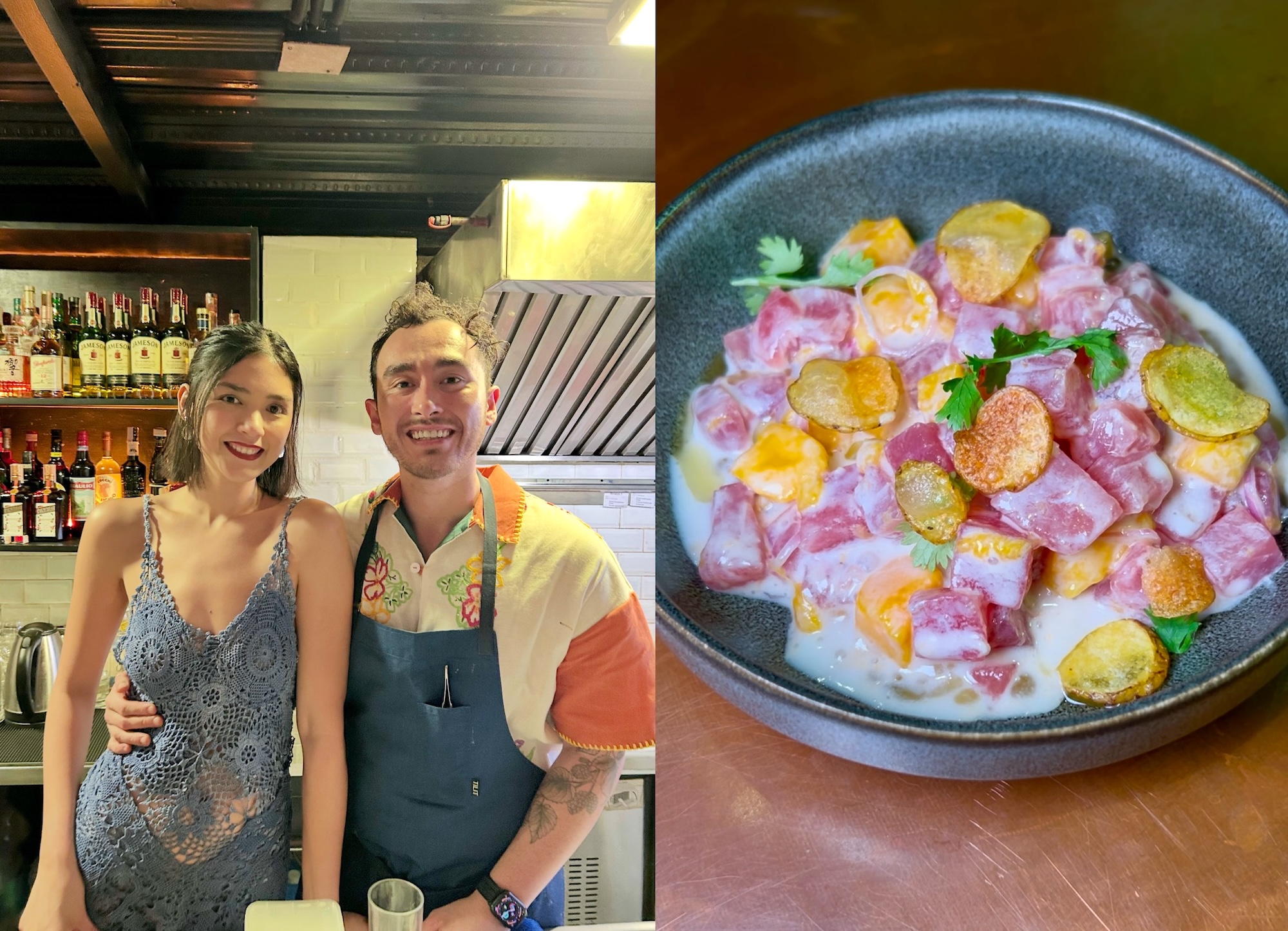New York-based international food and restaurant consultancy group Baum + Whiteman called it: Philippine cuisine will come out a top culinary trend in 2018. But for these Filipino-American chefs, the first step to helping make Filipino flavors a staple in the international culinary scene is to stop calling it a trend in the first place.
“Trends die. We’re not here to be a trend. We’re here to be institutional,” says Johneric Concordia, who runs Los Angeles restaurant The Park’s Finest with wife Christine Araquel-Concordia. “We’re here to be a cuisine and a flavor profile that stands with others, particularly European profiles and flavors. When someone writes and says you’re the next thing, there’s another writer that’s about to tell you that it’s passing. And that’s not what we’re about,” he adds.
We had the chance to sit down with the Concordias—who, through The Park’s Finest, “focus on the progression of Filipino food in the diaspora” and offer “American cuts of barbecue with Filipino flavor”— as well as other remarkable Filipino chefs Chad Valencia, Alvin Cailan, and Charles Olalia while they were in Manila for the Chefs Familiarization Tour, a food-centric initiative spearheaded by the Department of Tourism’s Los Angeles chapter. Here’s how it went:
Just the beginning

While they can’t deny there is more demand for Filipino cuisine in the US, the term hasn’t quite gained the traction it needs to become a household name—unlike other Asian cuisines such as Chinese, Japanese, Thai, and Vietnamese.
It’s common to hear people say “Let’s get Chinese takeout,” but nobody ever says, “Do you want to grab some Filipino food?” Everyone knows about dumplings, sushi, ramen, spring rolls, and even pho, but not too many people can name a Filipino dish other than adobo.
“Trends die. We’re not here to be a trend. We’re here to be institutional,” says Johneric Concordia.
And as far as defining roles in championing Filipino cuisine goes, these chefs aren’t keen on putting labels on what they do either. Yes, they’re advocates, foodies, immigrants, connoisseurs, business owners, and movers in the food and beverage industry abroad, but mostly, they’re US-based Filipinos who keep in touch with their roots through flavors and techniques that remind them of home.
“I don’t know if it’s our role per se, but for us, it’s the idea that your average Angeleno (the colloquial term for LA dweller) is going to ask, ‘What’re we going to have for dinner tonight?’ And not yet is Filipino food a part of that conversation,” notes Valencia, who is one half of Lasa, an LA joint specializing in “seasonal Filipino-inspired food.”

He explains that for people who happen to dine in their area, restaurants like Lasa might be an introduction to Filipino food. “So really, we’re just trying to be a part of that conversation. If that’s our role, just trying to get Filipino food to be one of the cuisines to choose from for dinner, then I’m happy with that.”
Valencia explains that Filipino food in the US is “a baby,” and that this leaves so much room for them to experiment and make the flavor profile more known, especially after having been reminded through the tour that the Philippines offers so many different flavors and raw ingredients.
“Being able to reinforce the idea that there’s just so much that each region has to offer, and for us to just have some sort of introduction to the flavors out there, it really gives us a sense of carrying our heritage and culture through our food. And through our food, there’s endless possibilities of expressing our ‘Filipino-ness,’ and I think that’s the exciting part of it. There’s so much room for folks to create,” Araquel-Concordia says.
Keeping flavors authentic

The group admits knowing these flavors are out there is great, but having access to these ingredients is a whole other matter. And while their restaurants serve as gateways to Filipino cuisine, sourcing raw ingredients that’ll stay true to Filipino flavors can get challenging.
“Hopefully, 10 years from now, there will be cooks and restaurateurs that have more access than we do. That’ll be exciting. It’d be nice to cook more Filipino food with more Filipino ingredients in the States,” Valencia says. Ingredients such as santol and dalandan are difficult to source in the US, and all the tamarind and coconut milk the chefs have on hand are from Thailand.
“We also do our best to seek out ingredients that will make sense on our menus. Like, I’ve been using pili nuts since Lasa started. So there are ingredients that will probably never make it to the States and maybe that’s okay, too, because it’ll always stay special when we come home and enjoy it. And there are some things that’ll make it to the States and we’ll find ways to honor and respect it,” Valencia says.
“When there are people from other cultures that come and visit our projects, I feel it’s my duty at least to share the story of where certain dishes came from. That’s the best way we’ve dealt with that whole foreigner confusion or even uncertainty of what our cuisine is,” says Alvin Cailan.
And since their goal is to institutionalize Filipino food, part of their job is making sure that people know where the dish came from and how they can bring it home with them, not just by getting takeout but by actually learning the recipe.
“If you’re Googling a recipe for dinner, you can easily make Swedish meatballs, but can you Google chicken inasal? We’re working our butts off every day at our restaurants, on our menus, so that when people see or read about it, they’ll want to do that next step and try to mimic it at home or find a restaurant nearby that does the same thing. So we just want to be part of that conversation,” explains Cailan, who has been in the industry for over a decade. His work with Eggslut and Amboy—both the restaurant and the cookbook—has made him a staple in the LA, Las Vegas, and New York food scenes.
On the radar

“When there are people from other cultures that come and visit our projects, I feel it’s my duty at least to share the story of where certain dishes came from. That’s the best way we’ve dealt with that whole foreigner confusion or even uncertainty of what our cuisine is,” says Cailan.
The chefs stress that they didn’t bring Filipino flavors to the US just so foreigners could enjoy them, but it’s an undeniable plus. The end goal, really, is to make people partake of the kind of food these chefs like to cook—the same food they’ve enjoyed with family and friends throughout the years. That, and bringing to light that Filipino cuisine (both the food and the experience) is, without a doubt, delicious.
“Before [they taste Filipino food, people would usually ask], ‘Is it spicy?’ And then after, it’s like, ‘How come I’ve never had this before?'” says Olalia, who owns a seven-seater joint called Rice Bar, which offers a selection of the country’s heirloom grains.
The rest of the group can’t help but agree. First-timers usually end up saying the same thing after a few spoonfuls of Filipino fare. And that novice fascination for Filipino food is enough to reignite their own.
“They automatically think they’re going to eat pancit, lumpia, and balut. Or adobo. Always. Because these are the dishes we’ve focused on for decades to show Americans [what Filipino food is.] When people come to eat at Amboy, whenever we do our barbecues, they have no idea what to expect. They’re like, ‘How come there’s no egg rolls? How come there’s no pancit?’ And we’re like, ‘You already know about that. Let’s do some new things.’”
The chefs stress that they didn’t bring Filipino flavors to the US just so foreigners could enjoy them, but it’s an undeniable plus. The end goal, really, is to make people partake of the kind of food these chefs like to cook—the same food they’ve enjoyed with family and friends throughout the years. That, and bringing to light that Filipino cuisine (both the food and the experience) is, without a doubt, delicious.
“We’re very conscious that everybody’s looking and we’re blessed enough to have been given some shine, some media but that’s not what we’re after. For us, it’s a craft,” Olalia says. “We work on it every day, we hone it, and we just try to be very responsible on how we present it to everybody. We just want to push the food for ourselves and if we do that, everybody else can follow.”
Originally published in F&B Report Vol. 15 No. 2












































